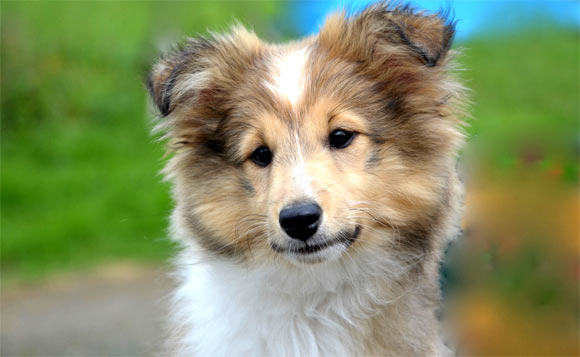Domestication shaped wolves (Canis lupus) into dogs (Canis familiaris) and transformed both their behavior and their anatomy. A new study, published in the Proceedings of the National Academy of Sciences, shows that dogs have the levator anguli oculi medialis, a muscle responsible for raising the inner eyebrow, which wolves do not.

Kaminski et al show that, in only 33,000 years, domestication transformed the facial muscle anatomy of dogs specifically for facial communication with humans; dogs with expressive eyebrows had a selection advantage and ‘puppy dog eyes’ are the result of selection based on humans’ preferences. Image credit: JacLou DL.
“The evidence is compelling that dogs developed a muscle to raise the inner eyebrow after they were domesticated from wolves,” said lead author Dr. Juliane Kaminski, a researcher at the University of Portsmouth.
“To determine whether this eyebrow movement is a result of evolution, we compared the facial anatomy and behavior of these two species and found the muscle that allows for the eyebrow raise in dogs was, in wolves, a scant, irregular cluster of fibers,” said Duquesne University’s Professor Anne Burrows, senior author of the study.
The only dog breed in the study that did not have the levator anguli oculi medialis was the Siberian husky, which is among more ancient dog breeds.
“We also studied dogs’ and wolves’ behavior, and when exposed to a human for two minutes, dogs raised their inner eyebrows more and at higher intensities than wolves,” Dr. Kaminski said.
“The findings suggest that expressive eyebrows in dogs may be a result of humans unconscious preferences that influenced selection during domestication. When dogs make the movement, it seems to elicit a strong desire in humans to look after them.”
“This would give dogs, that move their eyebrows more, a selection advantage over others and reinforce the ‘puppy dog eyes’ trait for future generations.”
“This movement makes a dogs’ eyes appear larger, giving them a childlike appearance. It could also mimic the facial movement humans make when they’re sad,” said co-author Professor Bridget Waller, a evolutionary psychologist at the University of Portsmouth.
“Our findings show how important faces can be in capturing our attention, and how powerful facial expression can be in social interaction.”
“These muscles are so thin that you can literally see through them — and yet the movement that they allow seems to have such a powerful effect that it appears to have been under substantial evolutionary pressure,” said co-author Dr. Adam Hartstone-Rose, an anatomist at North Carolina State University.
“It is really remarkable that these simple differences in facial expression may have helped define the relationship between early dogs and humans.”
“I must admit that I was surprised to see the results myself because the gross anatomy of muscles is normally very slow to change in evolution, and this happened very fast indeed, in just some dozens of thousands of years,” added co-author Dr. Rui Diogo, an anatomist at Howard University.
_____
Juliane Kaminski et al. Evolution of facial muscle anatomy in dogs. PNAS, published online June 17, 2019; doi: 10.1073/pnas.1820653116







